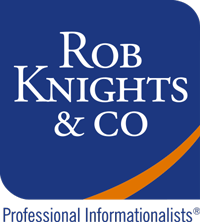Trying to Control Your Firm’s No. 1 Expense – Staffing Costs
Trying to Control Your Firm’s No. 1 Expense – Staffing Costs
For professional firms, staffing costs are the most significant expense that will be incurred, but this is money well spent because without our personnel it is very difficult to leverage our skills, expertise and time to adequately service clients.
That said, historically the ratio of salary costs (excluding equity holders) to revenue was around 33%. The old one third of the pie scenario. More recently however, this benchmark tends to range between 38% – 42% of fees, again prior to equity holders’ remuneration, placing greater pressure on a firm to control other overheads as a means of retaining similar profit margins.
Thus, a couple of ways your firm may be able to control or reduce current staff costs include:
1. Seniority
Generally firms operate with personnel ranging in age, experience, expertise, skills and training, unless it has a very flat structure. This will no doubt be driven by the types of services provided by the firm as well as its clientele. However, at times simply through retention and low staff turnover, a firm will find that is has some very expensive senior personnel that are reaching their limits in terms of further growth and contribution as well as future salary reviews. In such cases, some turnover will take place, it’s just a matter of when, and we need to be accepting of that. However, periodically it is a worthwhile activity to review the firm’s personnel structure as a means of highlighting gaps that may need to be filled in the future. Whilst most firms can’t run with solely junior staff, spreading seniority does represent one way of averaging down typical salary costs.
2. Average Cost
This will in part be influenced by the seniority of the personnel employed therein as briefly addressed in the prior point. A firm heavy in more senior staff will typically have a higher average salary cost, whilst those who are able to service its clients utilising more junior or perhaps less qualified staff, will benefit from lower typical costs. Location will also be influential as a result of the individual salaries that have to be paid to attract and retain personnel. Just ask our Western Australian colleagues based in Perth and adjacent suburbs who now have the highest average staff cost in Australia.
3. Staff Number
We’re often asked what differentiates average performing practices against more profitable firms, and whilst the answer will potentially include a combination of the prior two points, it will also include the pure number of staff employed. Historically because it has been difficult to find good staff at times when required to support ongoing growth, firms have tended to carry extra staffing resources to ensure they have the capacity to grow. However, with growth tight in many regions at the moment, these extra personnel are impacting on profit. More profitable firms tend to run leaner on personnel, achieving greater efficiency and productivity from those resources they do employ.
4. Outsourcing
As a means of addressing rising labour costs and a shortage in good personnel, some firms within the professions have turned to outsourcing. The outcome of which has tended to be mixed. Some firms will swear by the benefits they achieve through outsourcing whilst others have commented the benefits, both cost wise and other, are not as significant as expected or first thought. Whatever your firm’s view, to achieve real success from outsourcing, it needs to be implemented and supported with gusto. It will take two to three years for real change and benefit to arise.
For those accounting and multidisciplinary firms interested in benchmarking their current salary costs or individual remuneration levels or perhaps wanting to compare proposed New Year salary reviews, our upcoming Charge Rates & Salaries Report will be available from early December.
